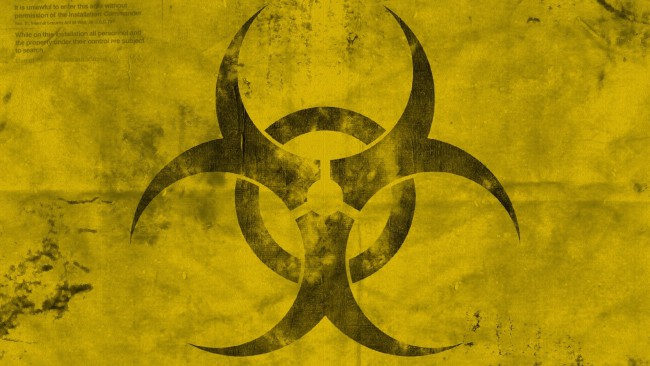
A nuclear weapon, despite its power and danger of it yesterday (well, and a means of national protection, of course). Now gaining popularity a new type of weapon. This confirms the increase in the number of books, movies and video games involving zombies, virus attacks and fungal weapons. In many of these stories biological disasters always lead to a dark future, and these literary worlds are a scary reality. Biologie is, alas, the future. Let’s look at ten major trends and their culprits in this area.
Anthrax
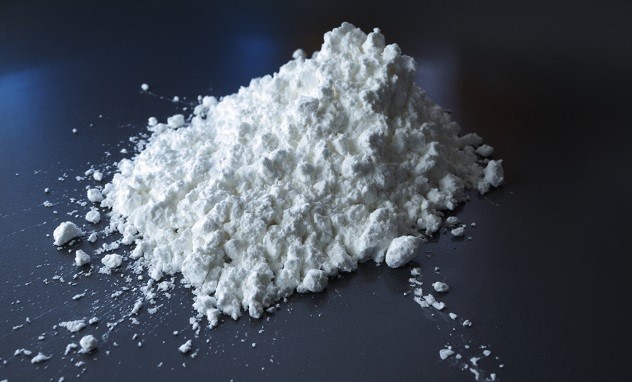
Among all kinds of biological weapons, the most popular is Bacillus anthracis, anthrax, a pathogen involved in several notorious attacks. In the first days after the events of 11 September 2001, several letters containing B. anthracis spores were sent to news media offices and two U.S. senators. Several people were killed and another 17 developed symptoms of the disease. In U.S. history this case was the loud involving biological weapons.
Anthrax — the most powerful pathogen. In its essence it is an obligate pathogen, which means that contact with him always leads to disease. To get infected by bacterium, the victim must swallow the spores. Spores — inactive derivative of many bacteria. They are resistant to extreme environmental conditions: heat, dehydration and disinfection. Anthrax causes negative effects, manifested in different forms, such as blisters, necrosis, abdominal pain, diarrhea, headache and other unpleasant symptoms. If not treated, death usually occurs.
Anthrax is a good candidate for Biologie because of their spores, which is very convenient to transfer and store. However, anthrax is not transmitted from person to person, limiting the possible spread in case of attack. In addition, the development of a vaccine against B. anthracis.
Brucella

Brucella is a zoonotic pathogen, usually choosing to sacrifice animals. When transmitted to humans it causes the disease brucellosis. It usually spreads from animals to humans through consumption of contaminated food, especially unpasteurized dairy products. Can also enter the body through wounds. Particularly at risk is the staff working in close contact with animals — veterinarians, agricultural workers, abattoir, etc.
Brucella is a good candidate for a biological weapon because it can infect humans through inhalation of infected dust or aerosol. The air path can pave a broad road of infection. Experience recurring infected (undulating) fever, pain, headache, swelling of the genitals, failure of liver and arthritis. Lethal outcome occurs with the development of complications associated with the heart, like endocarditis.
Possible cases of indirect attacks include Brucella eating infected carcasses of cattle that occurred in the UK in 2011. Brucella is rarely transmitted from person to person and for infection to be inhaled living cells, making the distribution slightly problematic. However, given the fact that it required from two to four weeks after initial contact to showing symptoms, transmission can occur unnoticed until you show the first signs of disease.
Francisella tularensis
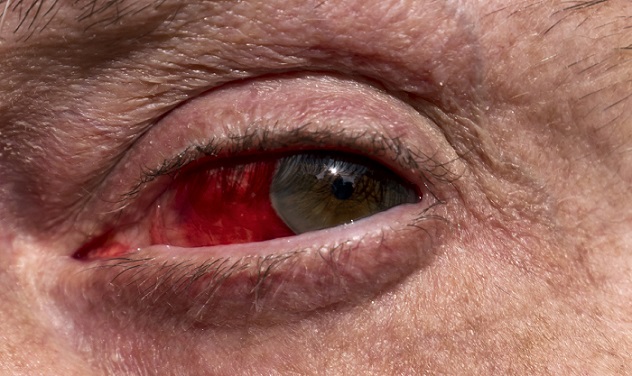
Francisella tularensis is a threat to first level according to the U.S. government. In other words, this bacterium can easily turn into a weapon and making a threat to people’s lives. It causes tularemia and infects humans and animals. To infect a person can in a lot of ways. For example, you can pet an infected animal and become sick, since the bacteria comes in contact with mucosal skin (e.g., eyes). People can get sick due to a tick bite, contact with an infected surface or through absorption of food or water. In addition, the disease can be get after inhaling infected dust, which makes the bacterium a powerful biological weapon. In addition, it can survive in a hostile environment and infect drinking water and food.
The severity of the disease depends on the location of the infection. But in General, the victim will suffer from symptoms such as rash, fever, swelling of lymph nodes, inflammation of the eyes. Pulmonary tularemia is the most severe and deadly of all. If you postpone treatment, followed by death.
Clostridium botulinum

Botulism causing Clostridium botulinum, a common soil bacterium, which, like anthrax, can produce dormant spores. This paralytic disease botulism is caused by neurotoxins produced by the bacterium. The toxin is very powerful and causes mortality in 50% of cases, although in recent years the mortality rate has decreased significantly.
The most likely route for the paramilitary Clostridium botulinum through food — spores must be swallowed. Because they have a high resistance to stress, they can experience many kinds of food processing, including treatment with heat, chemicals and even canning. After disputes successfully penetrate into the body, the bacteria grow and produce botulism neurotoxin, paralyzing the victim. If you have paralysis of the respiratory system, most likely, will die. Otherwise, the infected person will need a respirator.
Yersinia pestis (plague Bacillus)
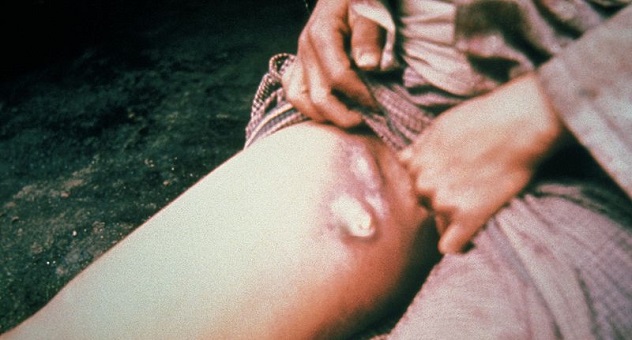
Plague Bacillus (Yersinia pestis) is the causative agent of the notorious Black Death plague, which ravaged Europe in the 14th century. Usually these bacteria breed on rodents and fleas. However can get infected and people being bitten, or when handling sick animals.
After infection, a plague can develop along three paths. Bubonic plague manifests itself in the form of buboes, painful and swollen lymph nodes. If left untreated, they result in septicemic plague, which causes organ damage and internal bleeding. Another form is pneumonic plague, which can cause problems with the respiratory system.
Plague can be transmitted from one person to another through inhalation of contaminated droplets, for example, in the process of sneezing. Hence pneumonic plague is more suitable for biological attacks. However, the use of Yersinia pestis has a number of disadvantages. To airborne transmission, potential targets need to be physically close to each other or the infected droplets will not achieve their objectives. In addition, if the infection time to notice that death can be avoided by adopting easily available antibiotics.
Leptospira
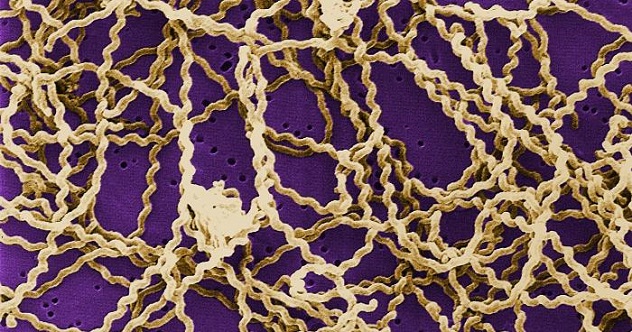
Leptospira is a group of spiral-shaped bacteria, which are in different animal species, including rodents. They cause leptospirosis, which can turn into a serious disease, known as Weil’s disease. Leptospira the person can pick up, if containing the pathogen of the animal urine comes in contact with an open wound. Infected animal’s urine may also contaminate the water and infect a large number of people.
Leptospirosis manifests itself in such symptoms as muscle pain, vomiting, abdominal pain, diarrhea, rash and fever. In many cases, this can lead to liver failure, which can be detected by yellowing of the skin. The infection can also lead to breathing problems and internal bleeding, resulting in the victim starts coughing up blood. Fortunately, the infection is treated with penicillin.
When used as a biological weapon, Leptospira, most likely, will be used for contamination of drinking water. In this environment, the bacterium can survive for long periods of time.
Pasteurella multocida

Pasteurella multocida was named after Louis Pasteur, one of the founding fathers of modern Microbiology. First found in poultry infected with cholera. This bacterium is common in animals, including domestic cats and dogs. People may become ill after being bitten or scratched.
During the transition to humans P. multocida can cause a skin disease. When crossing the blood-brain barrier can manifest in the form of meningitis. Also bacteria can be in the blood and cause endocarditis, an infection of the heart valves. In the further progress of the heart problems can lead to death.
Although contact with animals is the easiest way to get P. multocida, contact with infected nasal mucus can also be dangerous. Therefore, it is not recommended close contact with infected persons.
Use a P. multocida as biological weapons can be difficult. First, limited modes of transmission. Secondly, it can be easily treated with available antibiotics. Finally, although the disease can cause a number of serious problems, there is a chance that the symptoms will occur quite easily.
Borrelia burgdorferi
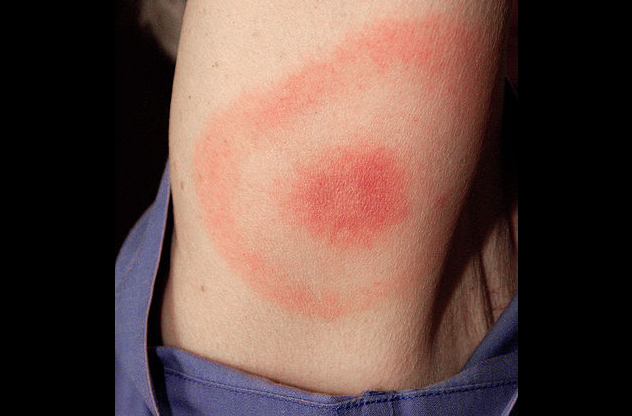
Borrelia burgdorferi causes Lyme disease, also known as borreliosis. The bacteria are transmitted through dog tick, known in science as Ixodes scapularis, which receives the contaminated blood of an animal and then transmits the pathogen to man. The disease is accompanied by fever, headache, inflammation of lymph nodes and chills.
However, the most distinctive symptom of Lyme disease is the presence of rashes. It almost always indicates the disease. In addition, further symptoms may include facial paralysis, loss of muscle tone, pain, and tachycardia. The pathogen can also infect the nervous system, leading to inflammation of the brain.
If this bacteria gets into the bloodstream and will hit the heart, will result in carditis Lyme. It can be fatal, if the heart would fail and stop. However, the consequences can be avoided in case of timely detection of the disease.
Coxiella burnetti
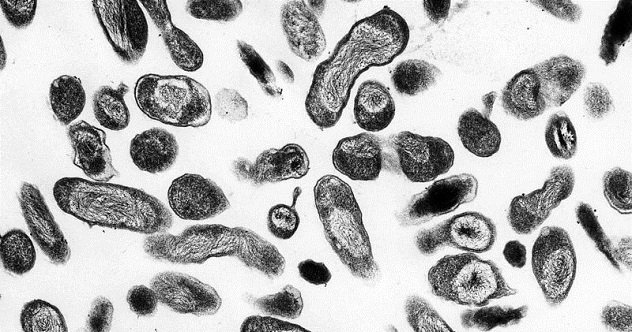
Coxiella burnetti is a very small bacterium that usually chooses the cattle, sheep and goats. It causes q-fever (Q fever). Transmission occurs most often during contact with infected animals. However, since the bacterium can also be transmitted through milk, consumption of unpasteurized or inadequately processed milk is equally dangerous. The pathogen can also spread through air and be transmitted from person to person.
C. burnetii is a major problem for companies in the processing of food. Because it can form dormant spores, they are resistant to heat and chemical attack. From here is born the possibility of food contamination. Once infected, a person develops symptoms such as fever, aches, chills, vomiting, and diarrhea. Also bacteria can give rise to hepatitis, myocarditis, pneumonia and meningoencephalitis, and chronic infections, the symptoms of which manifest years after exposure.
The C. burnetti is one drawback as a potential biological weapon: infected people may never develop symptoms.
Rickettsia
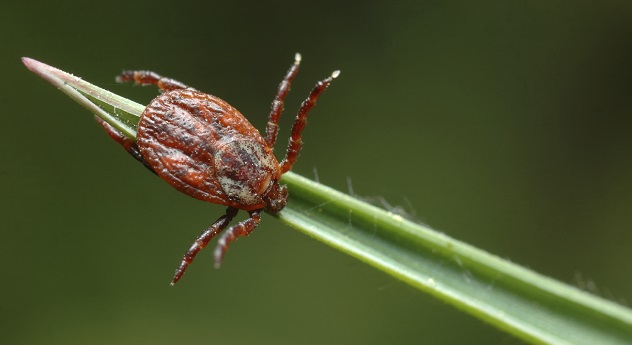
Rickettsia is a large group of closely related bacteria that are responsible for a number of diseases. This includes diseases such as rickettsiosis, murine and epidemic typhus. However, the most common is the spotted fever of the Rocky mountains. The disease is transmitted by the bite of ticks, especially the American dog ticks, wood ticks the Rocky mountains and other.
This disease can lead to death if not treated early. The first symptoms include fever, headache, vomiting, abdominal pain and nausea. Characteristic of the disease develop a rash within two days from onset of fever. As a result, the first diagnosis may miss the disease. Hence the ability to use rickettsiae as biological weapons because they cause high mortality.
And yet, if the time to recognize and cure, fatal complications can be prevented.
According to the materials listverse.com
